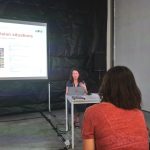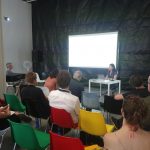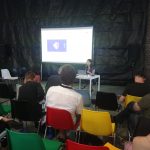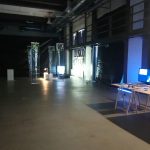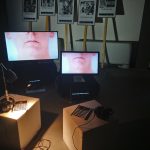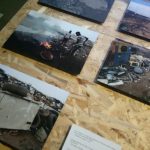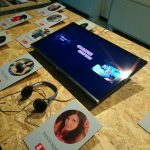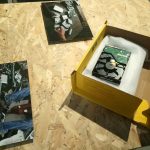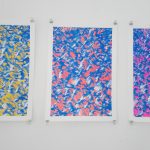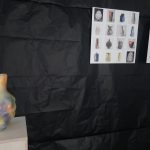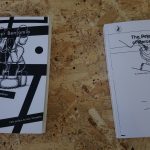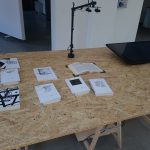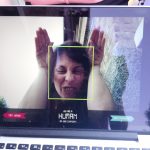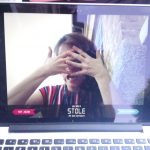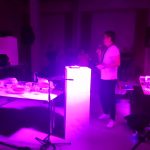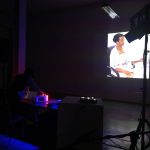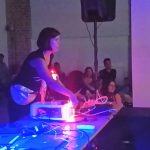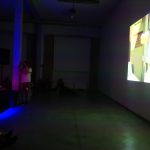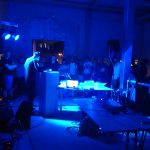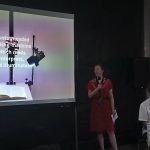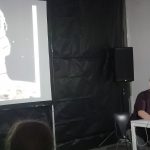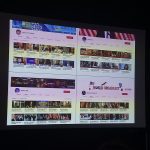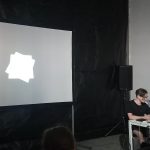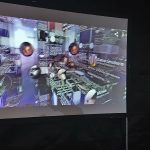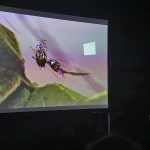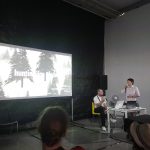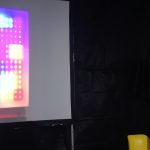After a two year break I was looking forward to attend for the fourth time one of my favorite conferences xCoAx. It is a rather small, yet friendly gathering of artist, designers and researchers interested in “an exploration of the intersection where computational tools and media meet art and culture” (http://www.xcoax.org/). Why I like this conference so much that it only has one track of presentation, meaning that there is a possibility to hear everyone talk, there is an exhibition and performances as part of the event and the artists also get a short slot to present their work. And since a couple of years there has been a doctoral symposium in the beginning of the conference and this year I had the chances to present there. In addition to getting feedback on my thoughts regarding my phd project I also had the opportunity to present with Andreas (as KairUs) a paper about our Behind the Smart World project and exhibit our work Forensic Fantasies in the exhibition.
Here are some personal notes, thoughts and photos (by KairUs) I was gathering during the 3 day conference.
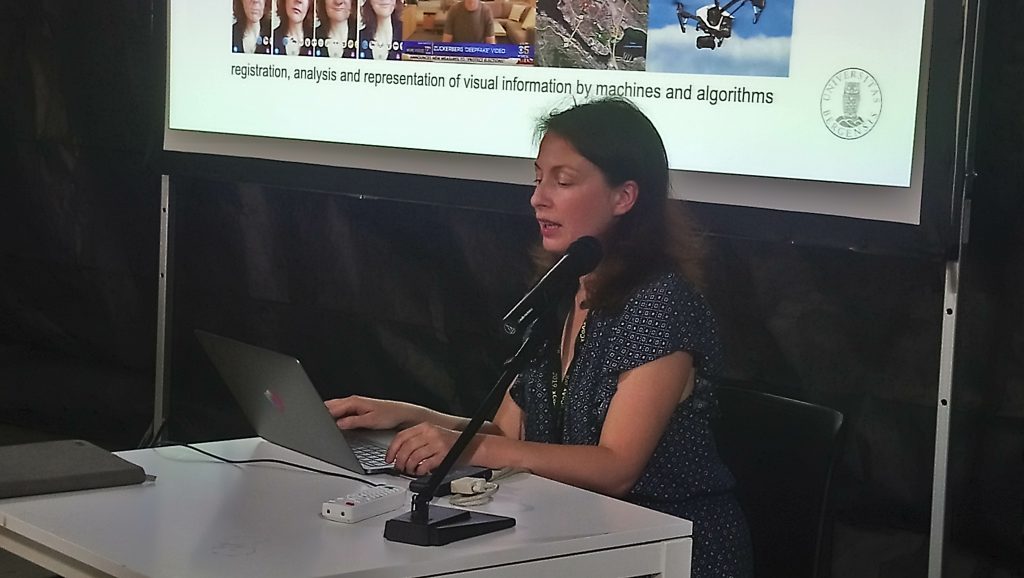
PHD Symposium
The PHD symposium was a new program number for me, so I was not sure what to expect. I had prepared a 15 minute presentation of my project in general and wished to get some feedback on presented methods and both suggestions and considerations regarding my research questions and topics.
Simona Chiodo Professor of Philosophy at the Politecnico di Milano, specialised in Aesthetics and Epistemology and Philip Galanter artist, theorist, educator, curator and an Associate Professor at Texas A&M University as our doctoral symposium chairs allowed us the given 15 minutes to present our project or a specific part of it, and then they gave each candidate about 15 minutes of time with their feedback and comments. We were six PhD candidates presenting, however, having just the afternoon time, with the requirement to finish in time for the exhibition opening started, we had to keep a strict regime with the time. A bit more time for a Q&A or an discussion among the PhD candidates as well as some breaks would have been appreciated. This relatively new program block will for sure develop further in the upcoming conferences. Even with given constrains the symposium was fruit full and all of the candidates stayed for the rest of the conference so we could ask our questions and get into discussions after the symposium. Before starting the session the chairs made it clear for us that they would give us feedback from the perspective of their discipline an in digesting their suggestions and comment we should always be true to our own institution. And in some cases even their feedback was conflicting, however, the symposium was conducted in a very friendly atmosphere.
The feedback I got from the symposium chairs was positive. Simona Chiodo encouraged me to follow the themes I had chosen. Philip Galanter recognized that I was talking about two kind of machine vision limits, technical which are breakable in terms of that technology can always evolve and some limits might be overcome. The other type of limits are more ethical, based on human values and cannot be broken, hence, he wanted me to be more selective or at least recognizes and define these differences.
In addition to me five other candidates presented:
In his presentation The Sounds of Obsolescence in the Age of Digital Re-Production, Paul Dunham (Victoria University of Wellington, New Zealand School of Music) discussed how to apply theories of Media Archeology to his object based sound installations. In connection to Paul’s presentation I noted a general comment from Simona that: The process of defining something is more important than the definition. Referring to that there is no definite definition and the process is more about abstracting.
Naja Le Fevre Grundtmann (University of Copenhagen, Department of Arts and Cultural Studies) presented a part of her research under the title: Aby Warburg’s Mnemosyne Atlas: An Iconology of Difference. I really appreciated her approach of close reading Aby Waburgs PanelC and linking it to search results of Mars in Google search. She argued that we can just extract a very small part of the human mind and make it computable, therefore, we can’t substitute all mental processes with algorithms. “We can use computing to say what is computable”.
Sabina Hyoju Ahn (University of Art and Design Linz) presented under the title Multi-Sensory Transformation of Biological Signals her practice based research situated betwixt Art and Science including projects using Atomic forced microscopy which was partly relevant for me from the Machine Vision perspective. A comment from Philip, which was directed to me and other participants as well, was to take a look at the History of Generative art for how ideas of algorithms and computing has been around for a long time in context of art.
Kim Albrecht described some machine learning techniques he has been using as a part of his design practice in a presentation called Design as Drawing Distinction. I found it interesting how he described the process of working with machine learning algorithms, how there is potentially millions of drawing and creating views, however, the designer/artist makes a lot of decisions affecting the outcome even in the very simple geometric works Kim presented both in the symposium and in the exhibition.
Tomasz Hollanek in Speculating on Artificial Intelligence from Early Photography to Contemporary Design started his presentation of how “Culture is black boxing” by reflecting on Vilém Flusser all technology is trickery statement. He described the black boxes as forms of bureaucracy and questions if design by uncovering, unboxing, undesireing, ever can materialize critique.
After the PhD symposium the opening of the art exhibitions were accompanied by heavy rain. Which did cause some damage as we figured out the next morning. Lucy for us we had due to other reasons moved our artwork and therefore avoided any damage. However there were several interesting artworks divided into two spaces, the white cube and the black box. Our work Forensic Fantasies was also exhibited.
Highlights from the conference
Paper Session 1 was very relevant for me discussing different aspects of AI from Generated AI art and fooling AI to feminist perspectives on AI. After the session I had the chance to try out Hanna’s & Co. photo booth a playful way to figure out how object recognition is working…or not.
The Spectre of Zombies is Haunting AI Art: How AI Resurrects Dead Masters, and Alternative Suggestions for AI Art and Art History by Tsila Hassine & Ziv Neeman
Can you fool the AI?: Investigating People’s Attitude Towards AI with a Smart Photo Booth by Hanna Schraffenberger, Yana van de Sande, Gabi Schaap & Tibor Bosse
Imagining Intersectional AI by Sarah Ciston
Some Things You Can Ask Me: About Gender and Digital Assistants by Pedro Costa & Luísa Ribas
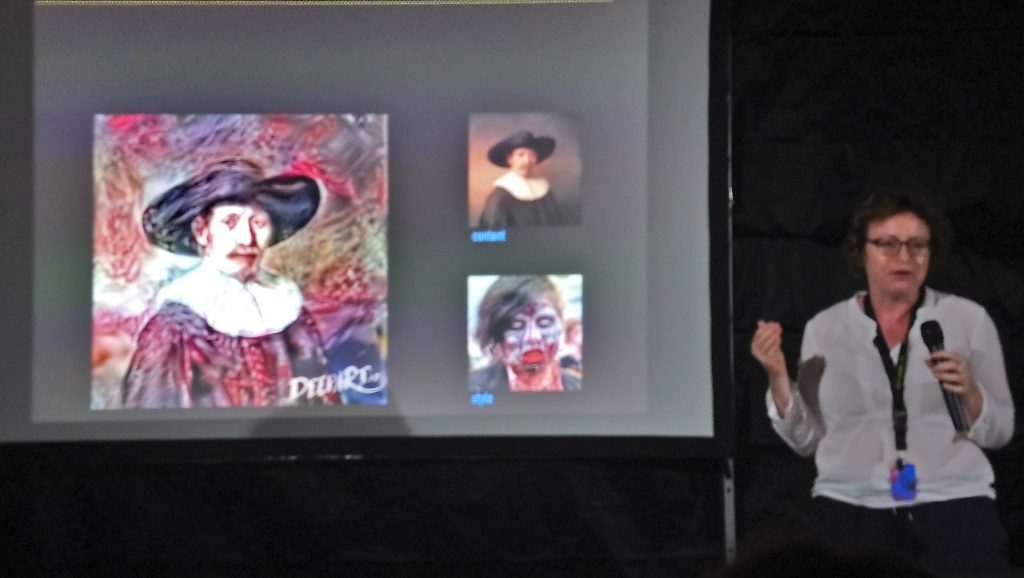
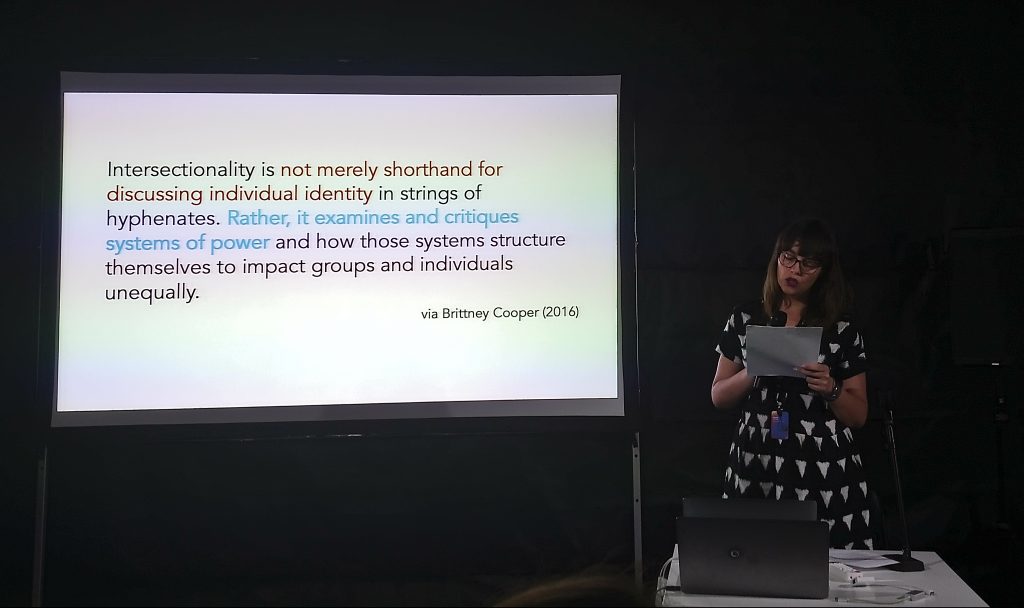

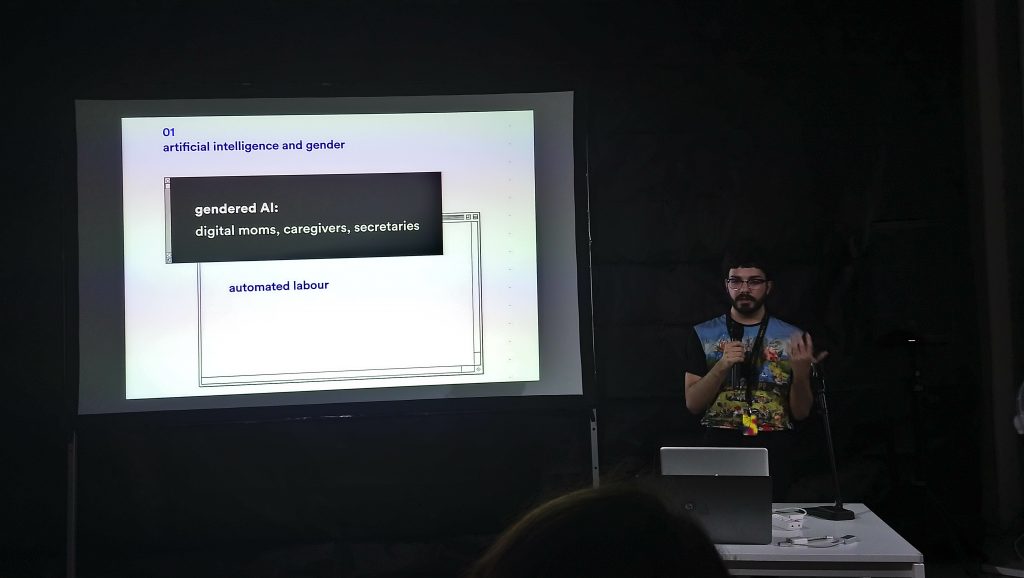
Testing Hanna’s & Co. AI photo booth.
In session 2 there was a couple of interesting papers on Surveillance Capitalism:
Deep Solutions: Artistic Interventions in Platform Surveillance
Craig Fahner & Matthew Waddell
Surveillance Capitalism and the Perils of Augmented Agency
Rodrigo Hernández-Ramírez
In session 3 papers on algorithmic curating and ethics in computation were interesting and worth re-visiting the papers. Gaia talk was about her experience as a curator in the exstrange project which we were also part of in 2017 (http://kairus.org/exstrange-online-auction-exhibition/).
Human-Algorithmic Curation: Curating with or Against the Algorithm?
Gaia Tedone
Catherine Griffiths
Approaches to Visualise and Critique Algorithms in Ethically Sensitive Spaces
In paper session 4 we presented our paper and afterwards was the Keynote of the day: Luciana Parisi researches the philosophical consequences of technology in culture, aesthetics and politics. She is a Reader in Critical and Cultural Theory at Goldsmiths University of London and co-director of the Digital Culture Unit.
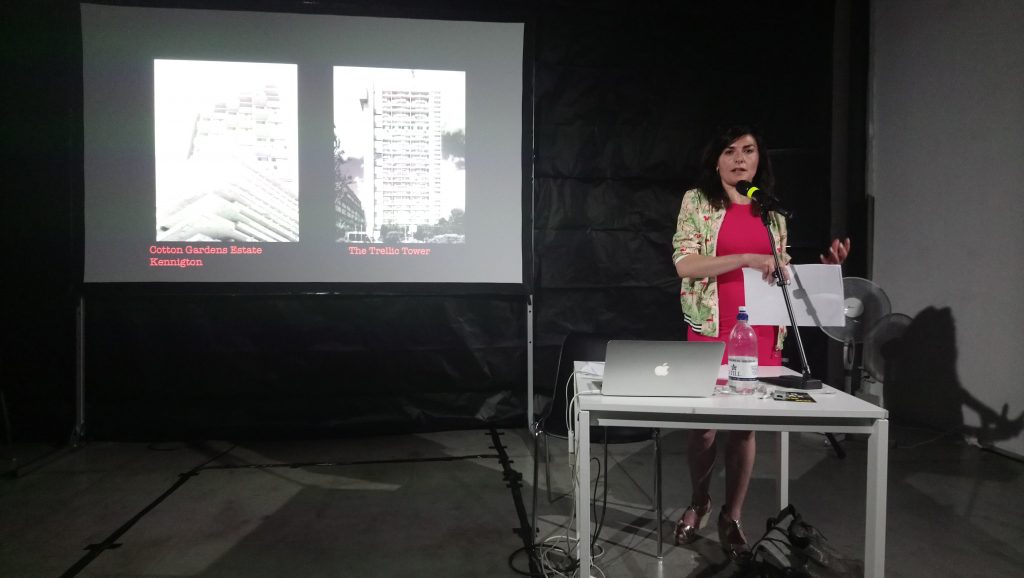
Information Diving on an E-waste Dump in West Africa: Artistic Remixing of a Global Data Breach by Andreas Zingerle & Linda Kronman
In the evening we attended a series of performances:
Laser Drawing by Alberto Novello
Never The Less: A Performance on Networked Art by Luís Arandas, José Gomes & Rui Penha
SKR1BL by Jules Rawlinson
Bad Mother / Good Mother by Annina Ruest
Serrate Nº 2 by Jingyin He
Both due to the topic and led light pimped breast-milk
pumps Annina’s performance evoked most thoughts in my mind.
Friday started with paper session 5 and Antonio Daniele’s & Yi-Zhe Song’s
Artistic Assemblage paper was interesting while referring to Katherine . Hayles’ non-conscious assemblages among other theories.
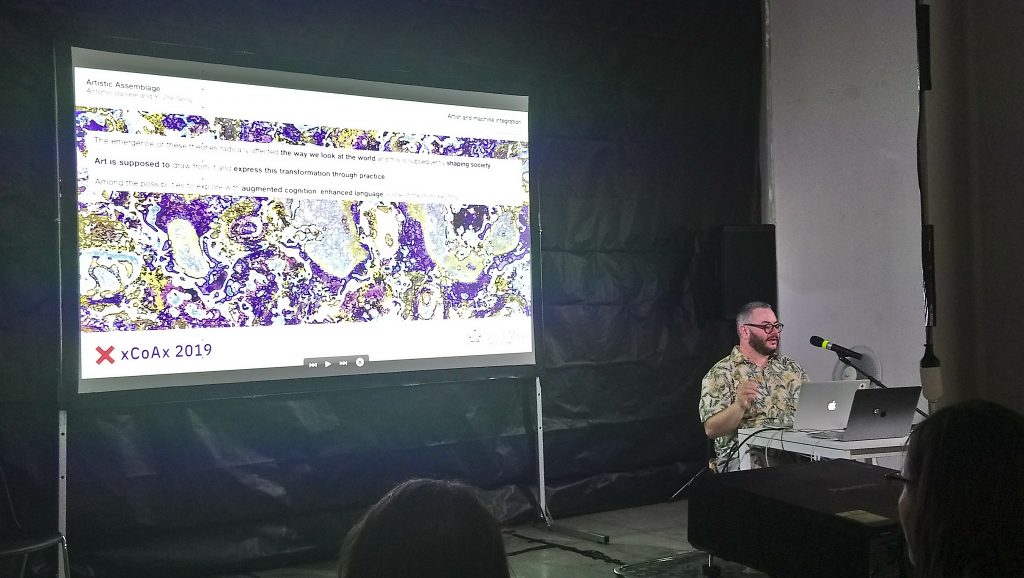
In paper Session 6 Rosemary Lee’s presentation Aesthetics of Uncertainty we heard about her work with neural networks. Her website is worth re-visiting with the machine vision database in mind.
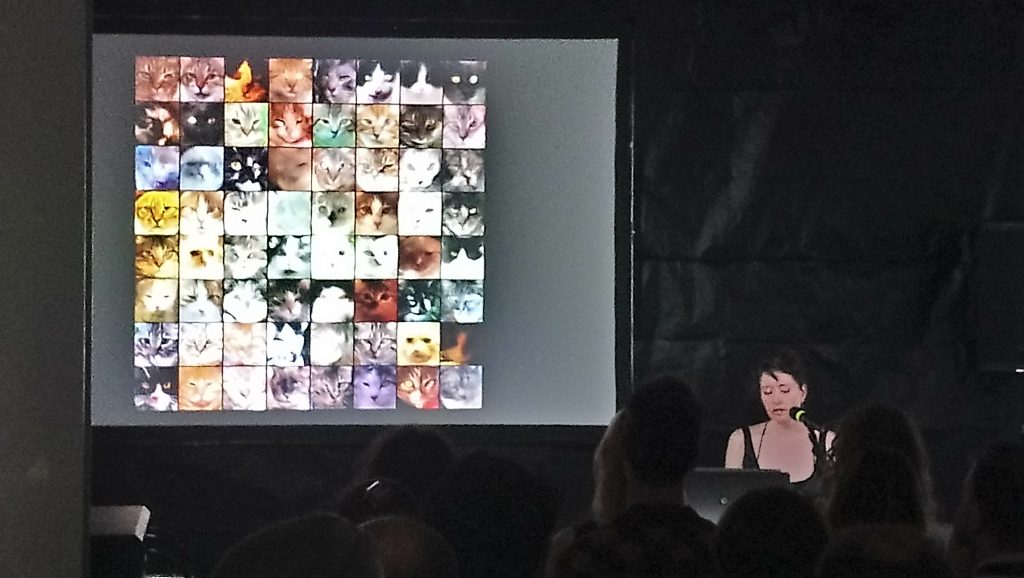
In the afternoon we presented ones more Forensic Fantasies in the Artwork Presentations slot. The performance presentations we missed while we had to set-down and ship our artworks back to Austria. However we made it back for the second Keynote by contemporary art critic and curator Domenico Quaranta who talked about how the Venice Biennal played out through social media channels. A couple of days later we actually had the time to visit the Biennal with his words in mind. The conference ended with a very nice conference dinner with lively discussions.
Artwork presentations with:
Andrés Villa Torres
André Rangel & Simon Rangel
Andy Simionato & Karen Ann Donnachie
Angela Ferraiolo
Carl Rethmann
Chris Williams
Francisca Rocha Gonçalves & Rodrigo Carvalho
Kim Albrecht
Linda Kronman & Andreas Zingerle
Marc Lee
Martin Bricelj Baraga
Martin Rumori
Paul Heinicker, Lukáš Likavčan & Qiao Lin
Philip Galanter
Philippe Kocher & Daniel Bisig
Tim Shaw

